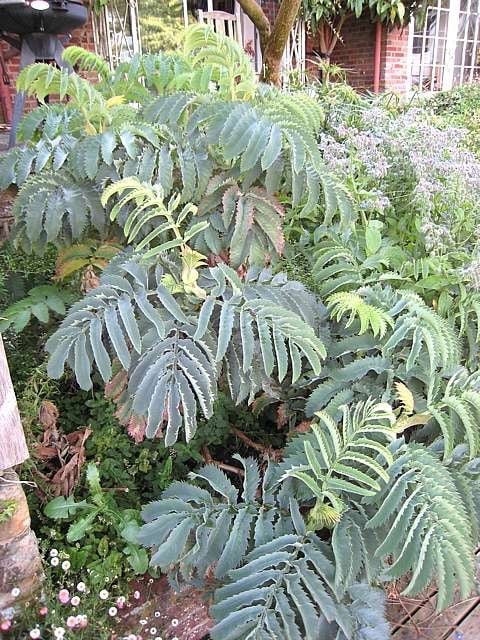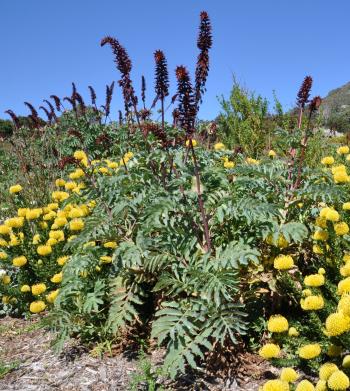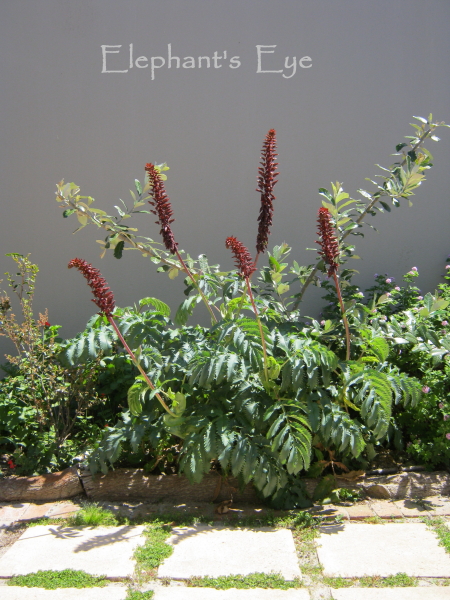How To Grow Melianthus Major: The Easy Guide To This Beautiful Perennial
Melianthus major is a beautiful and easy-to-grow perennial plant that is native to South Africa. It is known for its large, blue-green leaves and its tall, arching stems that are topped with clusters of orange or red flowers. Melianthus major is a great addition to any garden, and it is especially well-suited for sunny borders or containers.
Growing Conditions
Melianthus major is a relatively easy plant to grow, but it does have a few specific requirements. It prefers full sun and well-drained soil. It is also tolerant of a wide range of temperatures, making it a good choice for gardens in most parts of the country.
Planting
Melianthus major can be planted in the spring or fall. When planting, choose a location that receives full sun and has well-drained soil. If your soil is not well-drained, you can improve it by adding sand or compost.
Watering
Melianthus major needs regular watering, especially during the first year after planting. Once the plant is established, it is more drought-tolerant. However, it is still a good idea to water the plant deeply during hot, dry weather.
Fertilizer
Melianthus major does not need a lot of fertilizer. A light application of fertilizer in the spring will help the plant to thrive.
Pests and Diseases
Melianthus major is generally a pest- and disease-free plant. However, it can be susceptible to aphids and spider mites. If you see any pests on your plant, you can treat them with insecticidal soap or neem oil.
Propagation
Melianthus major can be propagated from seed or by division. Seedlings can be started indoors in the spring and transplanted outdoors after the last frost. Division can be done in the spring or fall.
Pruning
Melianthus major does not require a lot of pruning. However, you may want to trim the plant back in the spring to remove any dead or damaged growth. You can also trim the plant back to keep it in bounds.
Harvesting
The leaves and flowers of Melianthus major can be harvested for use in salads, teas, and other recipes. The leaves have a slightly bitter taste, but they can be used to add a unique flavor to your dishes. The flowers can be used to make a refreshing tea.
Conclusion
Melianthus major is a beautiful and easy-to-grow perennial plant that is a great addition to any garden. It is tolerant of a wide range of conditions, making it a good choice for gardens in most parts of the country. With a little care, Melianthus major will thrive for many years to come.
Melianthus major, also known as honey bush, is a beautiful and versatile plant that can be grown in a variety of climates. It is native to South Africa, but it can be found in gardens all over the world. Honey bush is a member of the daisy family, and it grows to be about 6 feet tall. It has large, showy flowers that are typically yellow or orange. Honey bush is also a good source of nectar, so it is popular with bees and butterflies.
If you are interested in learning more about honey bush, please visit Garden Wiki. This website has a wealth of information about the plant, including its history, cultivation, and uses.
FAQ of melianthus major
- What is Melianthus major?
Melianthus major is a large, herbaceous perennial plant native to South Africa. It is known for its colorful, daisy-like flowers that bloom in the summer. The plant can grow up to 6 feet tall and 4 feet wide, and it prefers full sun and well-drained soil.
- How do I grow Melianthus major?
Melianthus major is relatively easy to grow. It can be planted in the spring or fall, and it prefers a sunny spot with well-drained soil. The plant should be watered regularly, but it is important to avoid overwatering. Melianthus major is hardy to USDA zones 8-10, and it can be overwintered in colder climates by bringing it indoors.
- What are some common problems with Melianthus major?
Melianthus major is susceptible to a few common problems, including:
* Leaf spot: This fungal disease causes brown or black spots to appear on the leaves. It can be treated with a fungicide.
* Aphids: These small insects can suck the sap from the leaves, causing them to wilt and yellow. They can be controlled with insecticidal soap or neem oil.
* Winter damage: Melianthus major is hardy to USDA zones 8-10, but it can be damaged by cold winter weather. In colder climates, the plant should be brought indoors or covered with a protective layer.
- How can I propagate Melianthus major?
Melianthus major can be propagated by seed, division, or cuttings.
* Seed propagation: Sow the seeds in the spring in a well-drained potting mix. Keep the soil moist, and the seeds should germinate in about 2-4 weeks.
* Division: In the spring, divide the plant by carefully cutting it apart with a sharp knife. Each division should have several roots and shoots.
* Cuttings: In the summer, take softwood cuttings from the plant. Dip the cuttings in rooting hormone, and plant them in a well-drained potting mix. Keep the cuttings moist, and they should root in about 4-6 weeks.
Image of melianthus major
10 different images of melianthus major that are free to use:
- A close-up of a melianthus major flower. The flower is bright orange with yellow stamens.
- A full-grown melianthus major shrub. The shrub is tall and has a spreading habit. The leaves are dark green and lanceolate.
- A cluster of melianthus major flowers. The flowers are arranged in a panicle.

- A melianthus major leaf. The leaf is dark green and has a serrated margin.

- A melianthus major plant in a garden. The plant is surrounded by other plants, including lavender and roses.

- A melianthus major plant in a pot. The plant is on a patio, and it is surrounded by other potted plants.

- A melianthus major plant in the fall. The leaves are turning yellow and orange.
- A melianthus major plant in the winter. The leaves have fallen off, and the branches are bare.

- A melianthus major plant in the spring. The new leaves are emerging, and the plant is starting to flower.

- A melianthus major plant in the summer. The plant is in full bloom, and the flowers are a bright orange color.


Post a Comment for "How To Grow Melianthus Major: The Easy Guide To This Beautiful Perennial"